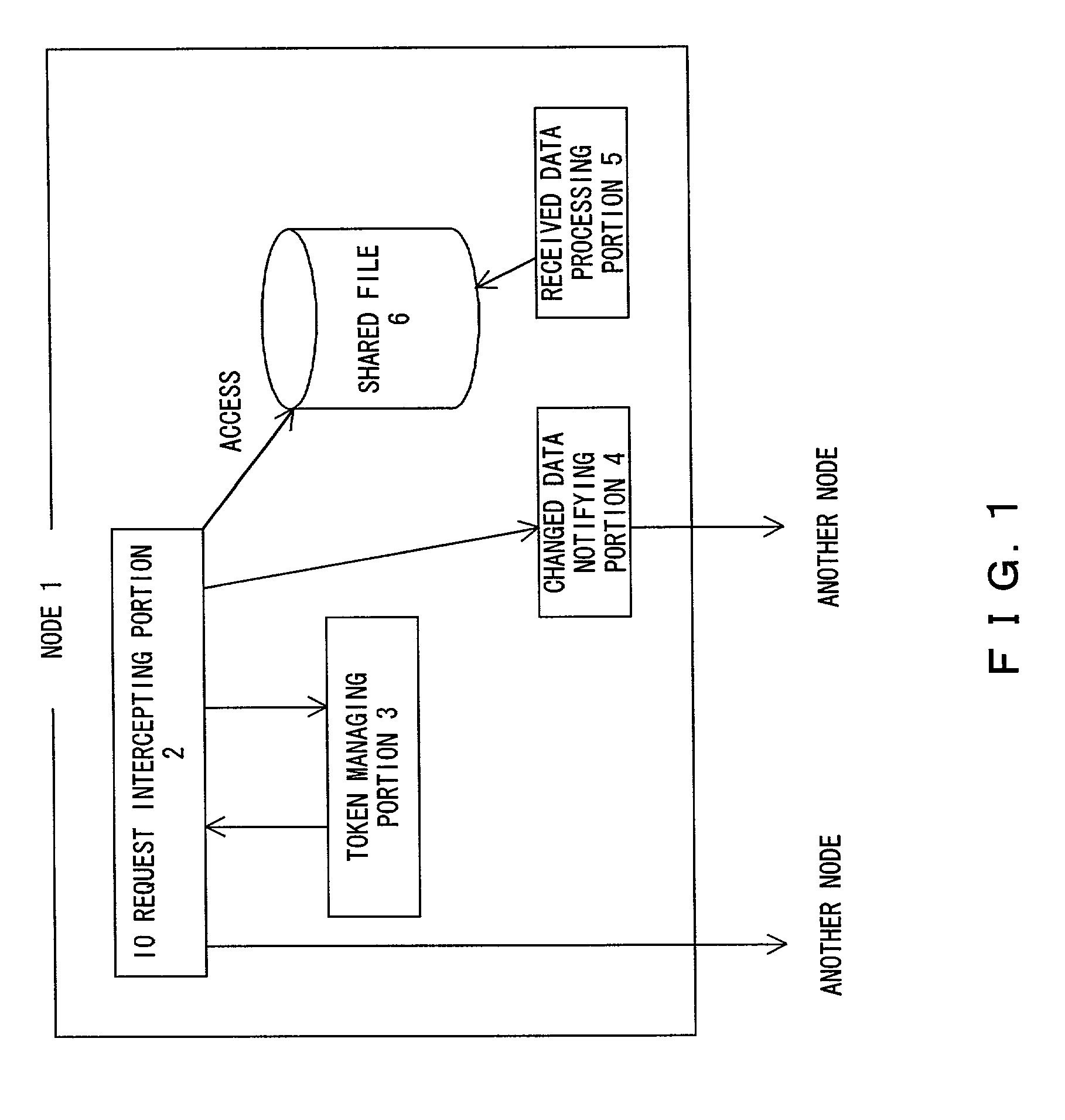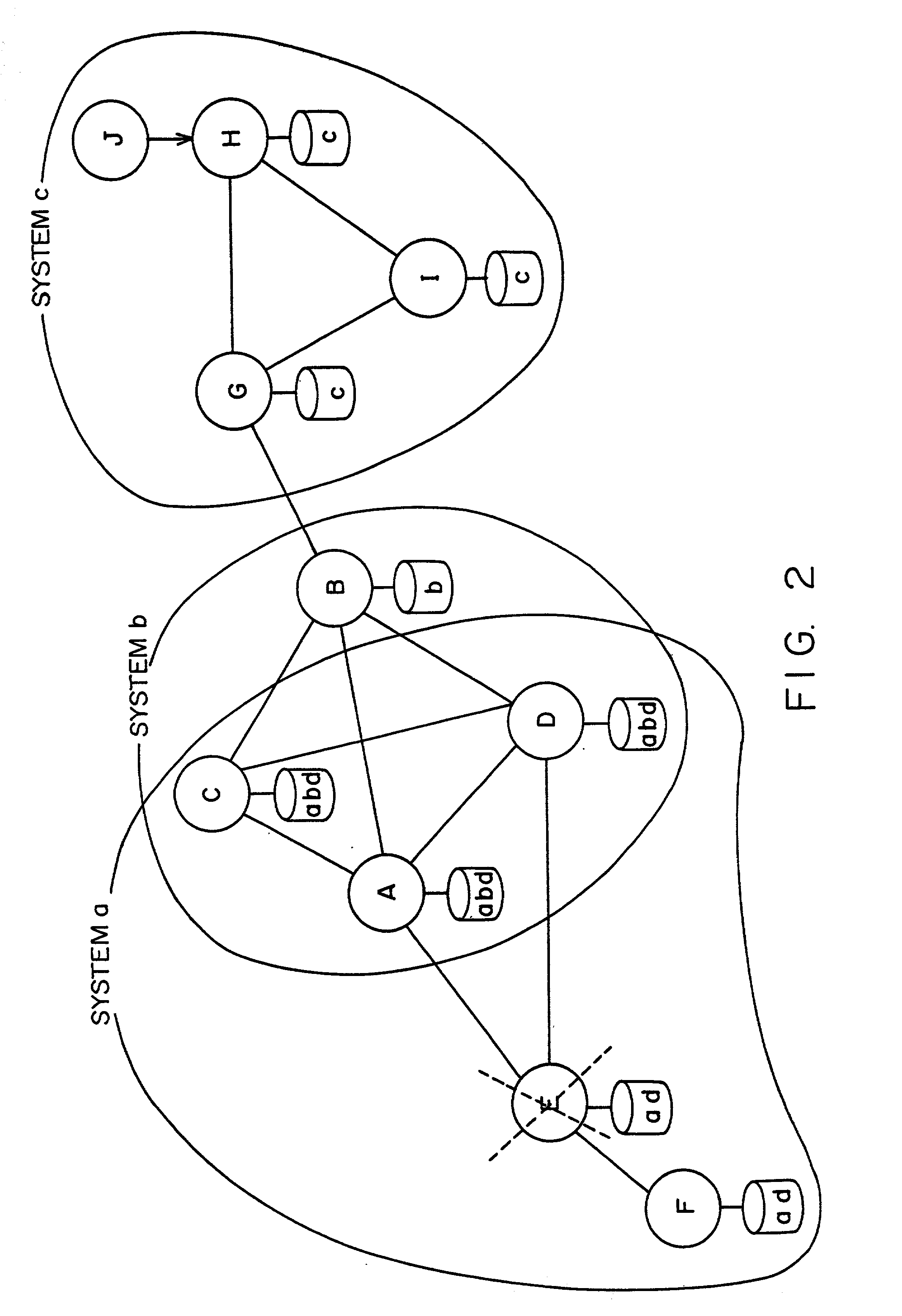File replication system, replication control method, and storage medium
a file replication and control method technology, applied in the field of file replication technology, can solve the problems of file destruction file may be destroyed,
- Summary
- Abstract
- Description
- Claims
- Application Information
AI Technical Summary
Benefits of technology
Problems solved by technology
Method used
Image
Examples
Embodiment Construction
[0070] FIG. 1 is a block diagram showing the theory of a node according to the present invention.
[0071] The node 1 according to the present invention is connected to another node through a network. The node 1 has a file 6 shared with another node. The node 1 comprises an IO request intercepting portion 2 and a token managing portion 3.
[0072] The token managing portion 3 manages access requests for a shared file 6.
[0073] The IO request intercepting portion 2 asks the token managing portion 3 to permit access to the shared file 6 in response to an access request for the shared file 6 in the node itself. When the token managing portion 3 permits the access, the IO request intercepting portion 2 access the shared file 6.
[0074] When another node has an update permission for the shared file 6, the token managing portion 3 notifies the IO request intercepting portion 2 of the node that has the update permission for the shared file 6 in response to the access request. When the IO request in...
PUM
 Login to View More
Login to View More Abstract
Description
Claims
Application Information
 Login to View More
Login to View More - R&D
- Intellectual Property
- Life Sciences
- Materials
- Tech Scout
- Unparalleled Data Quality
- Higher Quality Content
- 60% Fewer Hallucinations
Browse by: Latest US Patents, China's latest patents, Technical Efficacy Thesaurus, Application Domain, Technology Topic, Popular Technical Reports.
© 2025 PatSnap. All rights reserved.Legal|Privacy policy|Modern Slavery Act Transparency Statement|Sitemap|About US| Contact US: help@patsnap.com



